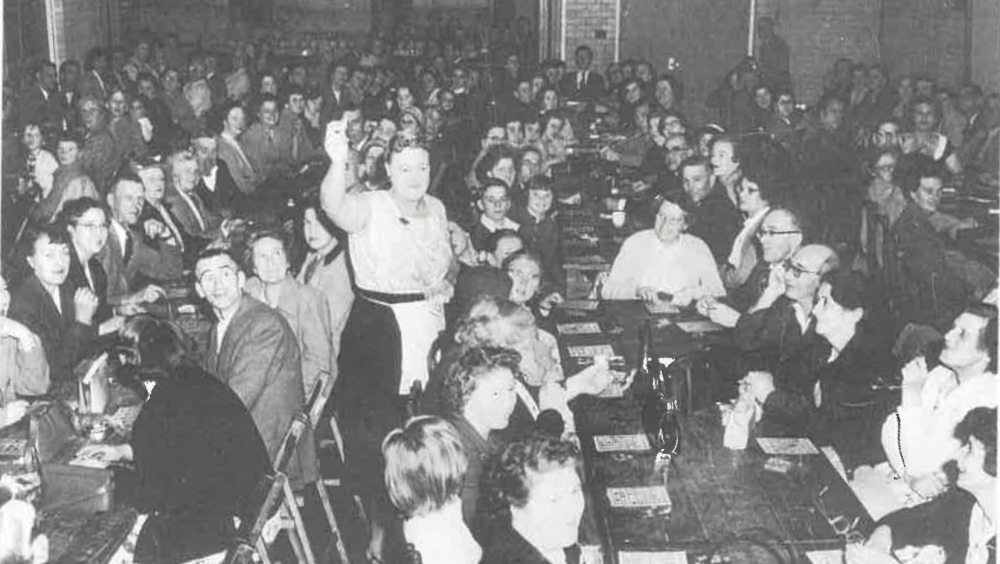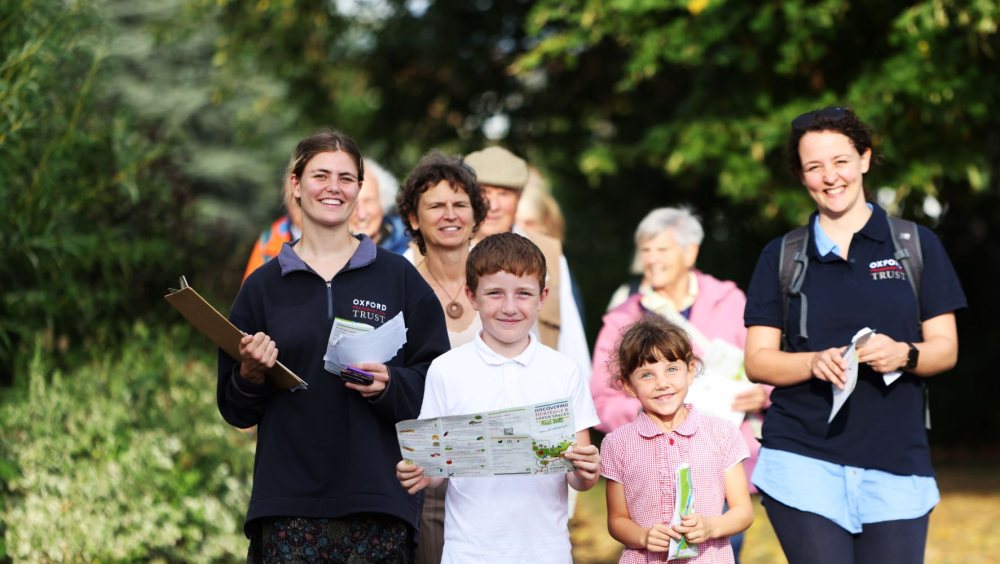Discovering the Heritage of Rose Hill: an often overlooked part of Oxford
Most people have an idea of what Oxford is like. The city of dreaming spires, groundbreaking research, and students on bicycles. 7 million tourists visit our city annually to wonder at the world-famous university city nestled into the English floodplains. Not everyone realises, however, that Oxford is a city where some of the wealthiest rub shoulders with some of the most deprived in England. In this story, we invite you to travel further away from the Oxford you imagine. Travel away from the college quadrangles and the science labs. Here, you will find Rose Hill: an often overlooked part of Oxford with an extraordinary story to tell.
Rose Hill is a neighbourhood with around 3400 residents, nestled at the southeastern edge of the city within the ring road. The story of Rose Hill and its relation to the rest of Oxford is complicated. Some early residents moved in when in the 1930s and 40s concerns over the quality of some of the housing in the city centre caused areas to be demolished and new and better housing provided. But it was the booming motor industry which caused a lot of growth in Rose Hill. Housing estates sprang up in Rose Hill to accommodate the factory workers who built cars in the nearby Morris Motors Factory. Many of them came to Oxford because they lost their jobs in the Welsh mining industry (The Changing Faces of Rose Hill, A. Spokes Symonds). The demographics of Rose Hill remain mixed even today, and Rose Hill is among England's 20% most deprived areas with almost half of the children and one-third of older people under the poverty line indicator (Oxford City Council). Yet it sits right up against the boundary of it’s the more affluent Iffley Village, though divided from it and in very different times, the 1930s, a decision was taken to keep them apart to protect the value of the houses, and only one minor road exists even today. (Wholesome Dwellings, M. Graham) In a neighbourhood in north Oxford, a controversial wall was built that separated wealthy private homes and council estates in Cutteslowe, which was finally demolished in 1959.
But there is more to Rose Hill than first meets the eye: the Rose Hill area has been occupied since the Iron Age (a history of Rose Hill, L. Woolley). This is a deep-rooted community with a story of resilience and a rich and fascinating industrial past. Oxford Preservation Trust wanted to celebrate what makes Rose Hill special and to engage with its residents to help bring the Rose Hill story to life. Oxford Preservation Trust is a small independent heritage charity, committed to protecting Oxford's green spaces, preserving special buildings and structures, and telling the stories of our city that are sometimes overlooked. Working with the Rose Hill community, we helped them to create a self-guided walk about the history and heritage of Rose Hill, available for free, for everyone.
The idea for this project started in lockdown after Oxford Preservation Trust (OPT) produced a series of self-guided walks around green spaces in Oxford, many of which are cared for by us and which we kept open, as our contribution to the health and well-being of everyone. The walks were very popular and it was clear people needed a way to feel connected to the place where they lived. We had been wanting to share the often-overlooked stories of the Rose Hill people for a long time, with the hope of broadening the focus of Oxford's heritage conversation and changing what people see as 'heritage'. It all began with a detailed history of the neighbourhood of Rose Hill, which was written by local historian Liz Woolley, especially for this project. Liz has a particular interest in the history of everyday life in Oxfordshire. Her fascinating 65-page account uncovered the more traditional aspects of the history of Rose Hill: from the Roman pottery that was found here to the wooden community centre which burnt down in 1955.
After that, it was time for a community engagement workshop in the Rose Hill Community Centre. Over tea and cake, people were encouraged to share their memories of Rose Hill through the years and to talk about the places that were special to them and how those various locations made them feel by writing a love letter, a postcard, or a poem to Rose Hill. We asked the groups to draw their individual ideas for a Rose Hill walk on a massive map, highlighting places of emotional significance. It was really great that so many people who had lived in Rose Hill for decades dropped in and shared their memories of the evolving community. A few weeks later, the same workshop was repeated at the Rose Hill Junior Youth Club to make sure the voices of the younger residents of Rose Hill were included in this project. The small team at Oxford Preservation Trust recorded this information and worked with a local graphic designer to create the walk. It is colourful, and fun, and focuses on the history and heritage of everyday lives: the allotments, community orchards, and graffiti walls.
The self-guided walk was launched as part of Oxford Open Doors 2022, which is one of the UK's largest Heritage Open Days festivals and has been organised by Oxford Preservation Trust for over 15 years. On this annual weekend in September, Oxford places, which are not usually open to the public, open completely free to celebrate heritage and culture across all walks of the city’s life. We invite all residents of Oxford to be a tourist in their own city for a weekend and try to bridge the gap between the University and local residents. There are exhibitions, concerts, tours, walks, lectures, art demonstrations, and workshops. It's a weekend for Oxford locals by Oxford locals. There is something special about being welcomed somewhere with a smile which is normally not accessible to you. This project is a celebration of the colourful tapestry of people in our city. However different our communities may be, together we make up the amazing city that is Oxford, and one cannot exist without the other. If the rich heritage of Rose Hill can be better understood by Oxford, England, and Europe, we hope it will be appreciated more and protected better. We also hope that more people from the Rose Hill community will want to get involved in Oxford Open Doors.
After the success of the Rose Hill walk, we want to work together with the community of Wood Farm, a neighbourhood in the southeast of Oxford falling into the 30% most deprived areas in England (English Index of Multiple Deprivation 2019) Together, we want to use this model of community engagement to create a similar self-guided walk that celebrates the people, community, and history of Wood Farm.
Oxford is at its very core a European city. The second-oldest University town in Europe, it has been a hub of ideas, research, debate, trade, and industry for many centuries. The endless flux of people through the city provides it with a continuous input of ideas. Oxford is always developing, changing, taking in new ideas, and becoming better. 35% of the people that live in Oxford were born outside of the UK (like the writer of this story), with most people coming from Poland, Germany, France, and Italy. Oxford is very proud of the links with our twinned cities all across Europe, which you find all around you. You can shop in Leiden Square, stroll along Bonn Square, or cycle across Grenoble Road and Padua way. Europe is all around us here, and Oxford would not have been the city it is today without centuries of ties to Europe. Oxford was the centre of the world's attention again when Oxford researchers developed the Covid-19 vaccine, over which over 100 million doses have been delivered to European people. Those labs are less than 4 kilometres away from where this story was written. Rose Hill has specific European ties as well. 26.5% of the residents in Rose Hill were born outside of the UK, compared to 13.8% for the rest of the UK (Oxford City Council). It was the beating heart of the booming Morris Motor industry. The dedicated worker produced cars that found their way all over Europe and all over the world. This project, like the European Open Days, aims to promote appreciation of the rich tapestry of cultures that we have in Europe by highlighting the often overlooked history of working communities in England. We hope increasing understanding of Rose Hill's history for both its inhabitants and the 'rest of Oxford', will result in a sense of pride and belonging and therefore better social and political policy. Inter-class cultural differences can be overlooked in England and in the heritage section especially. We hope to start an open conversation about this from a place of understanding and respect. The self-guided walk was launched as part of the Oxford Open Doors festival, which attracts an audience from all over Europe year after year. Every single visitor to Oxford Open Doors engages with European and English Heritage. We hope to turn their attention to all the other stories that Oxford has to tell.






